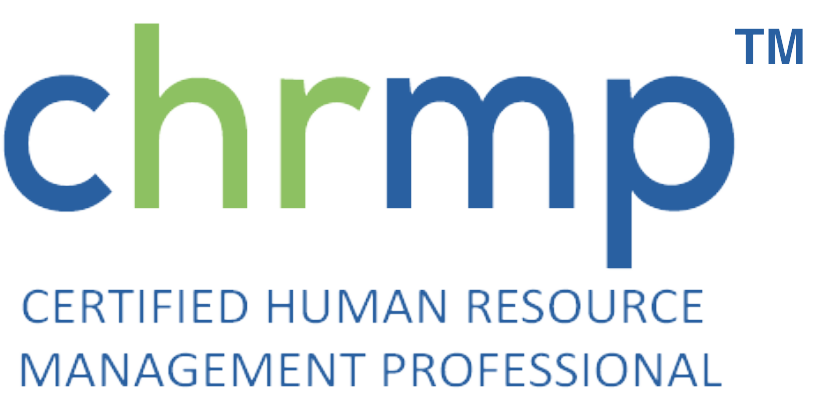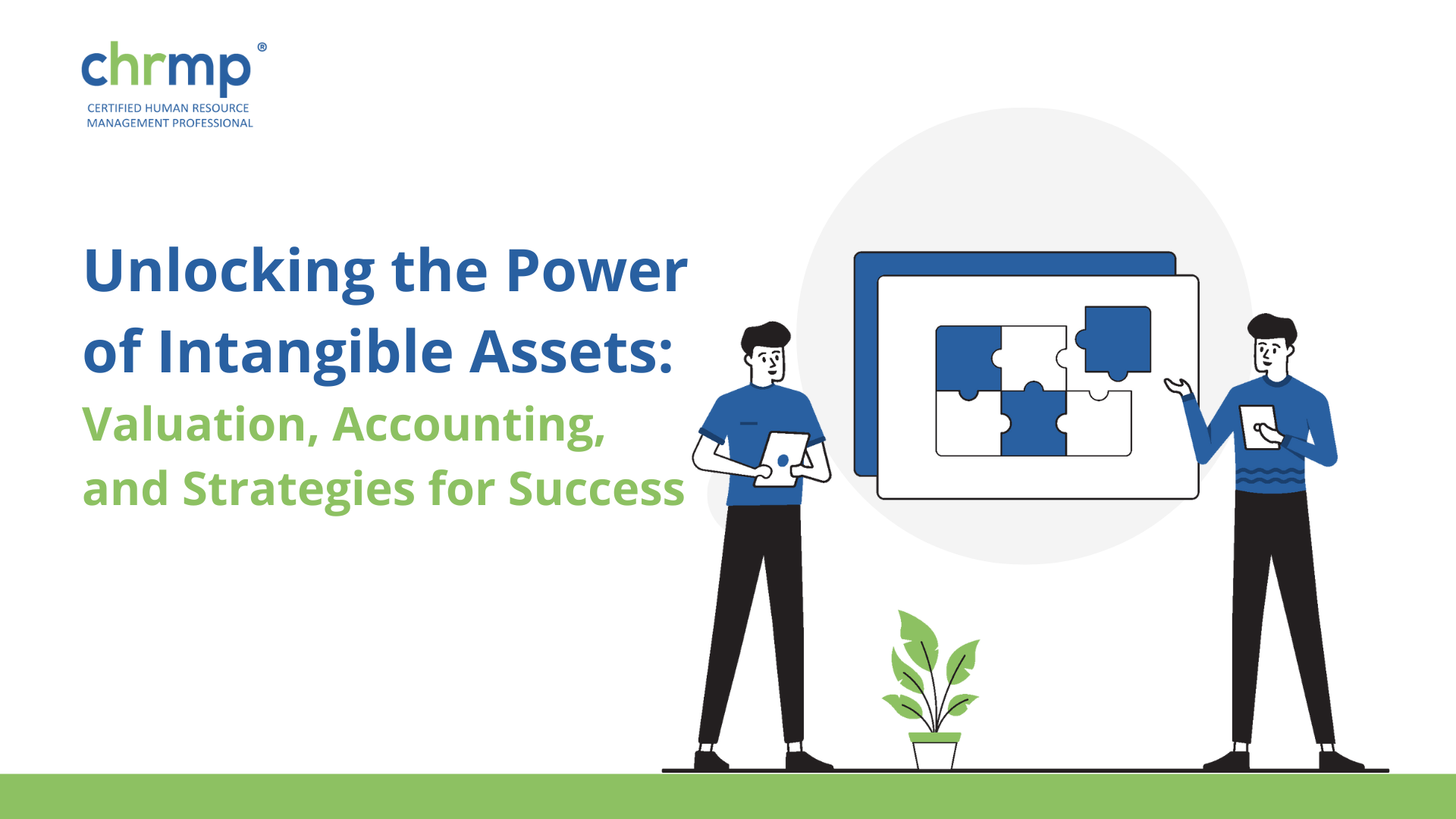Companies rely on various assets in today’s fast-paced business environment to preserve their competitive edge and spur development.
While buildings and equipment are frequently the first things that spring to mind when considering assets, intangible assets may be just as significant.
Non-physical assets such as patents, trademarks, copyrights, customer connections, and proprietary technology are examples of intangible assets that may be very valuable to a business.
Yet, evaluating and accounting for intangible assets can be difficult because they frequently need a distinct market value or a real useful life.
The definition, significance, and difficulties involved in valuing and accounting for intangible assets will all be covered in this blog article.
We’ll also go through future HR professionals’ educational options if they want to learn more about intangible assets and how they affect the workplace.
You will have a better knowledge of the worth of intangible assets and how they might affect the performance of your business by the conclusion of this blog article.
What are intangible assets?
Assets with value to a business but no physical presence are intangible assets.
These resources include human capital, brand equity, customer connections, goodwill, and intellectual property like as patents, trademarks, and copyrights.
As businesses move towards more service- and technology-based business models, these assets are becoming more and more significant in today’s market.
These assets, as opposed to tangible assets like machinery or buildings, cannot be seen or felt.
They frequently come about as a consequence of expenditures made in marketing, R&D, or other types of innovation that help a corporation gain a competitive edge.
These assets are essential to a company’s total worth since they may be leveraged to enhance revenue, decrease expenses, or gain market share.
As they greatly influence a company’s financial statements and overall worth, it’s crucial to recognize and account for them in financial reporting.
Although effectively reflecting the value of intangible assets on a company’s balance sheet might be difficult, it is necessary.
Assets are an important part of modern business, and organizations that want to thrive in the current market must recognize their importance.
Types of intangible assets
Intangible assets may be broadly categorized into several sorts and exist in a variety of shapes and sizes. Some of the most typical kinds of the assets are listed below:
Intellectual property (IP): Intellectual property is a category that includes trade secrets, copyrights, patents, and trademarks.
Patents protect inventions or discoveries, brand names or logos are protected by trademarks, copyrights protect literary or musical works, and confidentiality agreements protect trade secrets.
1. Goodwill: A company’s reputation, brand, and customer loyalty are all considered to be goodwill.
It is frequently developed through effective branding and marketing methods and may significantly increase a company’s total worth.
2. Brand equity: Brand equity is the worth of a brand that extends beyond its observable assets, such as structures or equipment.
It considers elements including brand awareness, client loyalty, and perceived quality.
3. Customer relationships: Client connections are the intangible benefits that a business receives from its ties with its clients.
This covers elements like client fidelity, repeat business, and recommendations.
4. Human capital: Human capital is the term used to describe a company’s workforce’s expertise, abilities, and experience.
This may significantly increase a company’s total worth, particularly in knowledge-based businesses like technology or consulting.
Businesses wishing to use their intangible assets to create value and achieve a competitive edge must have a thorough understanding of many forms.
Companies may spend their resources wisely and engage in marketing and innovation initiatives that can lead to long-term growth and profitability by recognizing and valuing their intangible assets.
Importance of intangible assets
It is impossible to exaggerate the value of intangible assets in today’s corporate environment. These are some justifications on why these assets are crucial for businesses:
1. Advantage in the marketplace: A company’s intangible assets may be a source of long-term advantage.
For instance, a strong brand may foster client loyalty and assist a business in standing out from rivals.
2. Income generation: An organization may get money like royalties from works protected by copyright or patent licensing fees.
3. Market value: An organization’s market worth may be considerably impacted by intangible assets.
Companies having significant brand equity or client ties, for instance, could command greater valuations than rivals.
4. Innovation: Financial investments in R&D and innovation can yield intangible assets.
These expenditures assist a business in staying ahead of the curve and developing new goods or services that cater to changing consumer demands.
5. Financial reporting: Accurately accounting for intangible assets has a substantial influence on a company’s financial statements and overall valuation.
They are a crucial part of financial reporting.
In general, they are essential for businesses that want to add value and flourish in the modern market.
Companies may position themselves for long-term development and profitability by investing in their intangible assets and using them to create a competitive edge.
Challenges of valuing intangible assets
Intangible assets are not tangible and have a subjective value; valuing them can be difficult. The following are a few of the major difficulties in valuing them:
1. Subjectivity: The value can change widely depending on elements, including market conditions, rivalry, and consumer preferences.
2. Absence of market information: Unlike tangible assets, they may not have an easily accessible market, making it difficult to estimate their worth using market information.
3. Difficulty in measurement: They are challenging to assess since they don’t have a physical existence.
Because of this, it may be difficult to evaluate them correctly and include them in financial reporting.
4. Value fluctuations: Market circumstances, technological advancements, and consumer tastes are just a few examples of the fast-changing variables that can affect the value of intangible assets.
It might be difficult to appraise them over time because of this appropriately.
5. Legal and regulatory factors: Legal and regulatory factors, such as patent infringement litigation or changes in copyright laws, can make it difficult to value some forms of intangible assets, such as intellectual property.
Notwithstanding these difficulties, it is crucial for businesses to appropriately assess intangible assets if they want to make wise business choices and accurately reflect their worth in financial reporting.
Businesses can evaluate their intangible assets using a variety of techniques, including market, income, and cost approaches, in collaboration with valuation professionals.
Finally, to use intangible assets effectively and engage in marketing and innovation initiatives that can lead to sustainable development and profitability, it is critical to understand the constraints and difficulties associated with valuing intangible assets.
Valuation of intangible assets
Accurately assessing a company’s value and wise business decisions depend heavily on the valuation of its intangible assets.
Although valuing intangible assets might be difficult, there are a number of approaches that businesses can use. Some of the most popular methods of valuation are listed below:
1. Market approach: The market method compares the asset to comparable assets that have recently sold on the market.
This approach can show the asset’s fair market worth and is frequently used to appraise patents or trademarks.
2. Income approach: The income approach entails assessing the projected future income or cash flows and discounting them to their current worth.
This approach is frequently used to estimate the value of software or customer connections and may show how much an asset is worth based on its capacity to generate money.
3. Cost approach: Estimating the cost of producing or replacing the asset is part of the cost method.
This approach is frequently used to determine the value of proprietary software or technology, and it can give a general idea of the asset’s worth based on the price of creation or replacement.
4. Relief from royalty method: The relief from royalty technique entails determining the price a business would pay if it had to get a third-party license for the asset.
This approach, which is frequently used to evaluate patents, can give a general idea of the asset’s worth based on the possibility of licensing income.
5. Multi-period excess earnings method: The multi-period excess earnings approach involves predicting the earnings that the asset is anticipated to provide during a specific period and then the residual profits anticipated to last after that period, and then the residual profits that are anticipated to last after that time period.
This technique can give an indicator of the asset’s value based on its earnings potential and is frequently used to assess customer relationships or brand equity.
Ultimately, the type of asset being evaluated and the particular circumstances involved will determine which technique is most suited for valuing intangible assets.
Companies may make well-informed choices regarding the worth of their intangible assets and how best to use them to create value and achieve a competitive edge by consulting with valuation experts and considering various approaches.
Accounting for intangible assets
For intangible assets to be properly accounted for and to be in compliance with accounting rules, their value must be accurately reflected on a company’s financial statements.
Intangible assets should be accounted for taking into account the following factors:
1. Finding intangible assets: Finding intangible assets is the first step in accounting for them.
Patents, trademarks, copyrights, customer connections, and unique technologies are just a few examples of intangible assets.
2. Valuation: After being recognized, intangible assets must be appropriately priced.
As was previously said, there are several ways to value intangible assets, and the best approach will depend on the kind of asset being evaluated as well as the unique conditions at hand.
3. Amortization: Intangible assets are normally written down over the course of their useful life or the time frame during which the asset is anticipated to bring the business advantages.
The asset’s value is decreased on the balance sheet by the amortization expenditure, which is shown on the business’s income statement.
4. Impairment: An impairment loss may need to be recorded if the value of an intangible asset considerably drops or it becomes improbable that the asset will continue to benefit the firm in the future.
As an item on the income statement, impairment losses lower the asset’s value on the balance sheet.
5. Disclosure: Businesses must include in their financial accounts information regarding their intangible assets.
This might contain information on the different kinds of the assets owned, their estimated remaining lifespan, and any notable changes in their value or impairment losses noted.
Intangible assets must be accurately recorded in order for their worth to be reflected on a company’s financial statements and to accurately portray the company’s financial status to investors and other stakeholders.
To be sure they are accounting for these assets appropriately, businesses should consult with accounting specialists and keep current on relevant accounting rules.
Tangible vs Intangible Assets: What’s the Difference?
Tangible assets are physical assets that have a physical existence and can be touched or seen. These assets have a monetary value and are typically used in the operations of a business. Examples of tangible assets include buildings, machinery, equipment, vehicles, inventory, and cash.
On the other hand, intangible assets are non-physical assets that lack a physical form but still hold value for a business. They are usually intellectual or legal rights that provide economic benefits. Intangible assets include patents, trademarks, copyrights, brand names, goodwill, customer lists, software, and intellectual property. These assets are vital for a company’s long-term success but cannot be physically touched or seen.
The main distinction between tangible and intangible assets lies in their physical presence. Tangible assets are tangible objects or resources, while intangible assets represent rights, knowledge, or intellectual property. Both types of assets contribute to the overall value and competitiveness of a business, but they differ in nature and how they are accounted for in financial statements.
Conclusion
The value and competitive advantage of a corporation is largely dependent on its assets. These may consist of things like copyrights, patents, trademarks, customer connections, and proprietary technology. Making educated business decisions and effectively reporting the value of the assets on a company’s financial accounts can be difficult, but it is necessary.
For example, the market technique, income approach, cost approach, relief from royalty method, and multi-period excess profits method can all be used to assess these assets. The kind of item being appraised and the unique variables at play will determine the best strategy.
Intangible assets must be recognized, valued fairly, amortized over their useful lives, and, if required, subject to impairment losses in order to be properly recorded and shown in financial statements. To be sure they are accounting for the assets appropriately, businesses should consult with accounting specialists and keep current on relevant accounting rules.
Overall, intangible assets may be quite valuable to a firm, and it is crucial to appropriately evaluate and account for them in order to maximize their advantages and obtain a competitive edge in the market.
Visit CHRMP (Certified Human Resource Management Professional) and check out our courses if you want to learn more about these assets and how they fit into a business.
You may learn more about these assets and their effects on HR activities by taking one of our courses on a variety of topics, such as corporate strategy, intellectual property law, accounting, or finance.
Frequently asked questions
1. How can I determine if my business has intangible assets?
It’s crucial to thoroughly study your company’s financial statements and other documents to find any intangible assets because intangible assets can take many different forms.
Examples that are frequently used include copyrights, patents, trademarks, customer connections, and private technologies.
Working with an accountant or financial adviser who can assist you in identifying and valuing intangible assets is a smart choice if you’re uncertain.
2. Can intangible assets be sold or given to a different business?
It can really be sold or given to another business.
Yet, since the procedure might be intricate, it’s crucial to comprehend both the asset’s worth and the transfer’s legal ramifications.
The effect on the company’s overall strategy and competitive advantage must also be taken into account.
3. How do mergers and acquisitions approach intangible assets?
As they may affect a company’s value and competitive advantage, it can be very important in mergers and acquisitions.
To ensure they are properly represented in the acquisition price, the acquiring business will frequently assess the target company’s assets.
The purchasing business might also need to consider how transferring intangible assets would affect laws and regulations.




